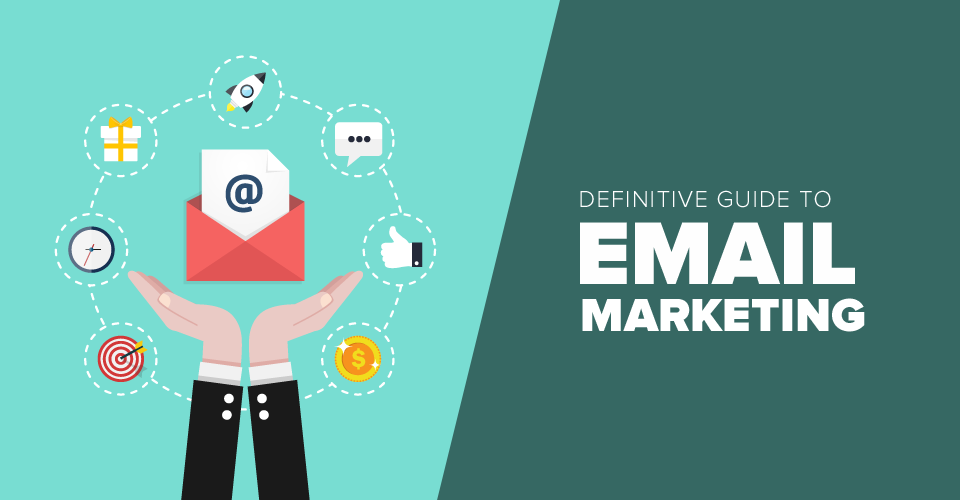Email marketing remains one of the most effective digital marketing strategies, providing businesses with direct communication channels to engage their audience. A well-optimized email marketing strategy can drive higher conversions, boost brand loyalty, and increase revenue. In this guide, we’ll explore the best practices, strategies, and tools to help you achieve better email marketing results.
1. Understanding Email Marketing and Its Importance

Email marketing is the practice of sending targeted emails to customers and prospects to build relationships, promote products, and drive conversions. It is cost-effective and offers a high return on investment (ROI).
Benefits of Email Marketing:
- High ROI: Email marketing delivers an average ROI of $42 for every $1 spent.
- Personalized Communication: Tailor messages based on user behavior and preferences.
- Customer Retention: Keeps your audience engaged with valuable content.
- Automation Capabilities: Save time with automated workflows.
2. Building an Effective Email List
A quality email list is the foundation of successful email marketing. Here’s how to grow and maintain a strong subscriber base:
a) Use Lead Magnets
Offer incentives such as eBooks, discounts, or free trials to encourage sign-ups.
b) Optimize Signup Forms
Ensure forms are simple, mobile-friendly, and strategically placed on your website.
c) Segment Your Audience
Divide your email list based on demographics, behavior, and purchase history for better targeting.
d) Maintain List Hygiene
Regularly clean your email list by removing inactive subscribers and invalid email addresses.
3. Crafting High-Converting Email Campaigns

To boost engagement and conversions, follow these best practices:
a) Write Compelling Subject Lines
Your subject line determines whether an email is opened. Keep it concise, relevant, and intriguing.
Example: “Limited-Time Offer: 50% Off Just for You!”
b) Personalize Your Emails
Use customer names and tailor content based on their preferences.
c) Focus on Value-Driven Content
Provide useful information, exclusive offers, or engaging stories to keep subscribers interested.
d) Optimize Email Design
Ensure your emails are visually appealing, mobile-responsive, and easy to read.
e) Include Clear CTAs (Call-To-Actions)
Encourage readers to take action by using persuasive and strategically placed CTAs.
Example: “Shop Now,” “Claim Your Free Trial,” or “Download Your eBook.”
4. Email Automation for Efficiency
Automation streamlines email marketing and ensures timely interactions with your audience.
a) Welcome Email Series
First impressions matter. Send a series of welcome emails to introduce your brand and set expectations.
b) Drip Campaigns
Deliver a sequence of emails based on customer actions, such as signing up for a webinar or abandoning a cart.
c) Re-engagement Campaigns
Target inactive subscribers with special offers or surveys to win them back.
5. Analyzing and Optimizing Email Performance

Tracking key metrics helps refine your strategy for better results.
Important Metrics to Monitor:
- Open Rate: The percentage of recipients who open your email.
- Click-Through Rate (CTR): The percentage of recipients who click on links within your email.
- Conversion Rate: The percentage of recipients who take the desired action (purchase, sign-up, etc.).
- Bounce Rate: The percentage of undelivered emails due to invalid addresses.
- Unsubscribe Rate: The percentage of recipients who opt out of your emails.
Ways to Improve Performance:
- A/B Testing: Test different subject lines, content, and CTA placements to determine what works best.
- Optimize Send Times: Schedule emails when your audience is most active.
- Refine Segmentation: Continuously update customer segments for better targeting.
6. Email Marketing Tools for Success
Leverage these tools to enhance your email marketing campaigns:
- Mailchimp: User-friendly email automation and analytics.
- HubSpot: Advanced CRM integration for personalized marketing.
- Constant Contact: Great for small businesses with customizable templates.
- ActiveCampaign: AI-powered automation for better engagement.
- ConvertKit: Ideal for creators and bloggers focusing on content marketing.
Also Read : Top Affiliate Marketing Strategies To Maximize Your Earnings
Conclusion
Email marketing remains a powerful tool for driving conversions and customer engagement. By focusing on list building, crafting compelling campaigns, leveraging automation, and analyzing performance metrics, businesses can create high-converting email strategies. Consistently optimizing your approach will ensure long-term success and a strong ROI.
FAQs
1. How often should I send marketing emails?
It depends on your audience and industry. Generally, sending emails 1-4 times per month keeps engagement high without overwhelming subscribers.
2. How do I avoid emails going to spam?
Use verified email domains, avoid spam-trigger words, and encourage recipients to whitelist your emails.
3. What is the best time to send marketing emails?
Typically, Tuesday and Thursday mornings (8 AM – 10 AM) or evenings (6 PM – 8 PM) yield the highest open rates.
4. Should I use plain-text or HTML emails?
Both have advantages. Plain-text emails feel more personal, while HTML emails are visually engaging. Testing both can determine what works best for your audience.
5. How do I improve my email open rates?
Write compelling subject lines, personalize emails, and segment your audience to send relevant content.

